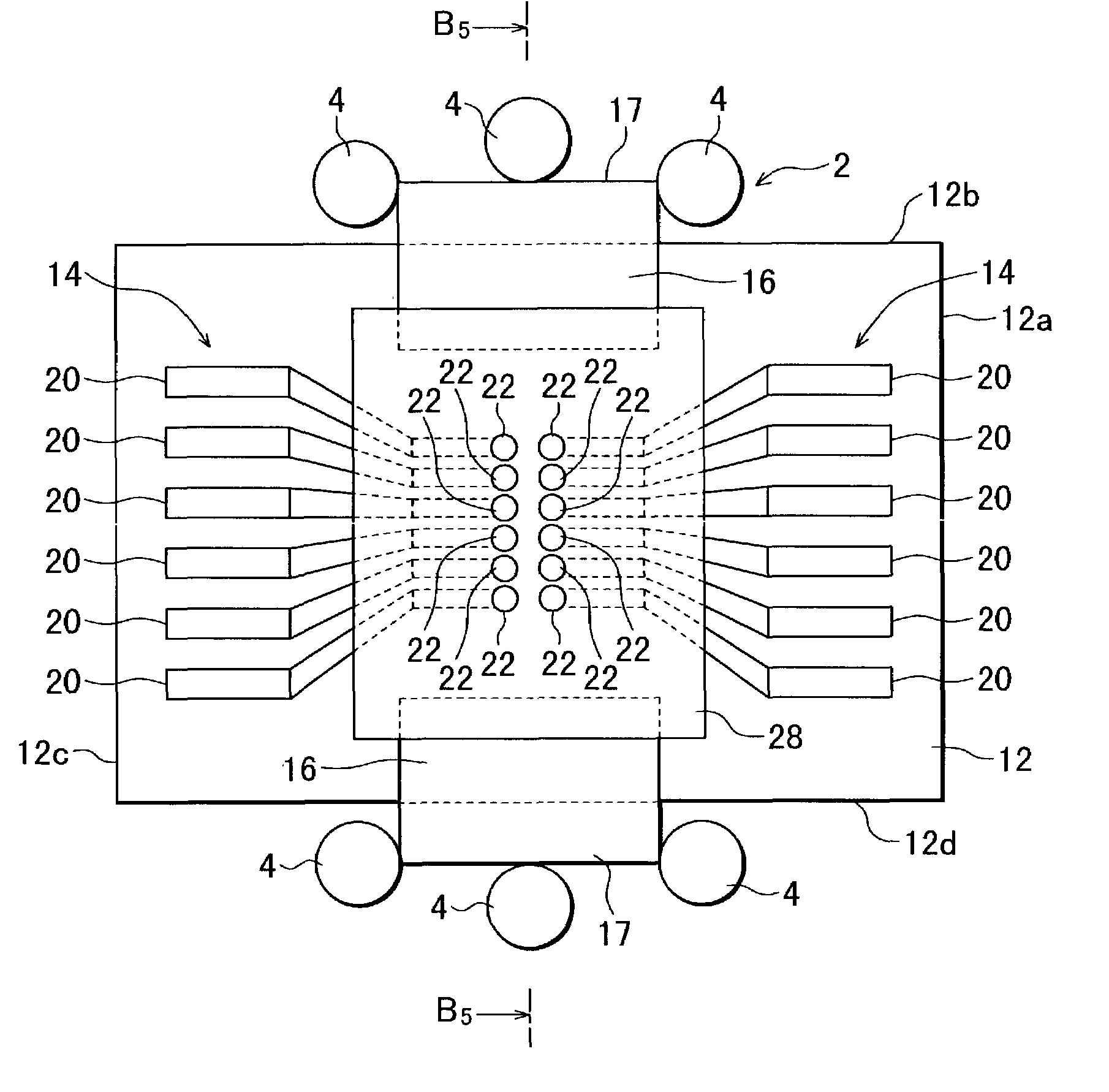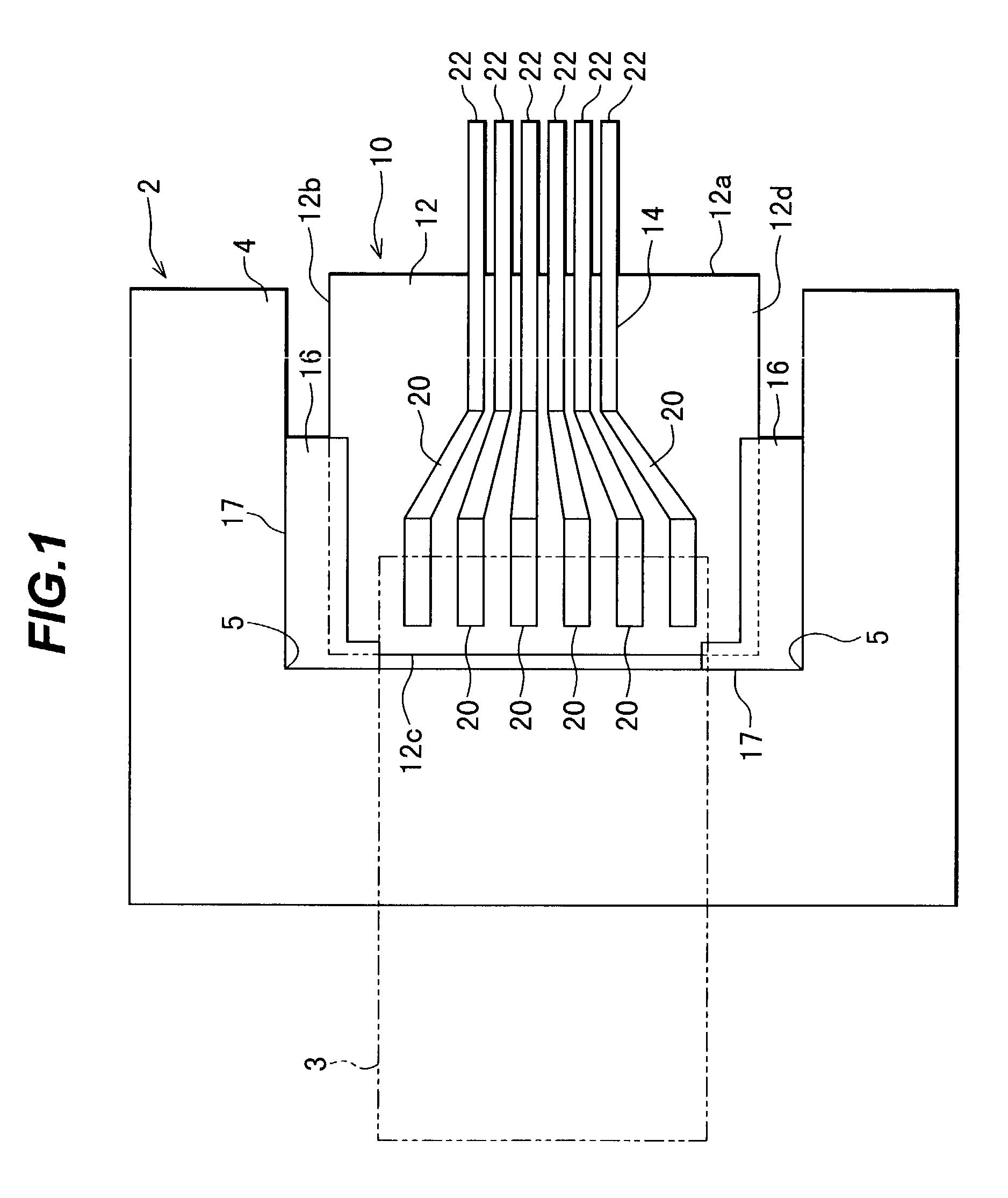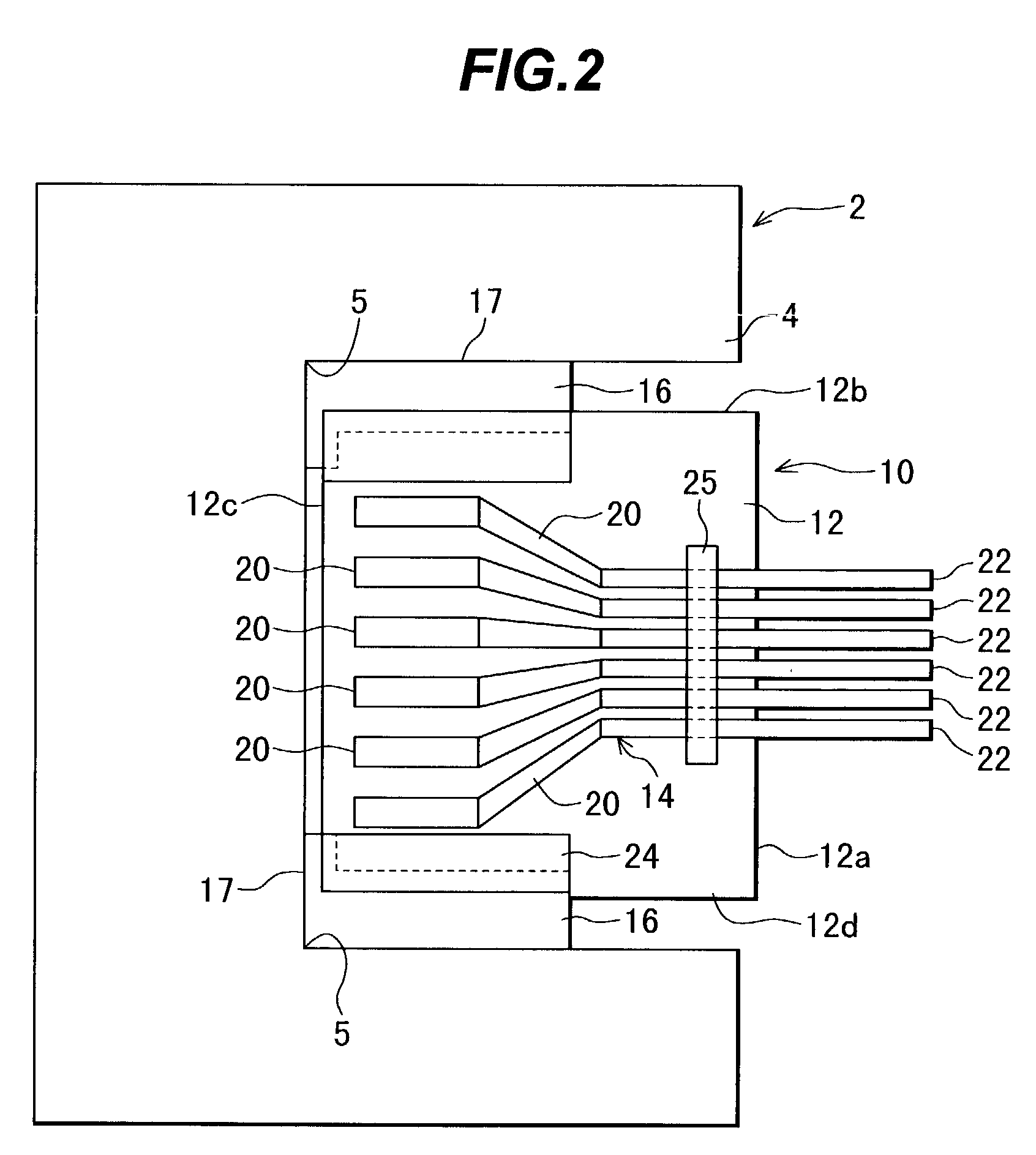Probe unit and its manufacture
a technology of probe pins and probe pins, which is applied in the field of probe pins, can solve the problems of difficult to form a probe unit compatible with such a pitch, difficult to adhere leads to an insulating base at a high precision of position alignment, and difficulty in forming a probe unit, so as to improve the position precision of the probe pins relative to the electrodes of the test body, and improve the accuracy of the position alignment of the probe pins
- Summary
- Abstract
- Description
- Claims
- Application Information
AI Technical Summary
Benefits of technology
Problems solved by technology
Method used
Image
Examples
Embodiment Construction
[0073]Description will be made on the preferred embodiments of the invention, referring to the drawings. Probe units according to the embodiments of the invention will be described. First to fifth structures of a probe unit 10 shown in FIGS. 1 to 5B will be described first. The probe unit 10 has a lead pattern 14 and positioning members 16 formed on a substrate 12. The probe unit 10 is fixed to a probe device 2 positioned above a test body base (sample base). In the examples shown in FIGS. 1 to 5B, although one probe unit 10 is fixed to the probe device 2, the number of probe units to be fixed to the probe device 2 is determined depending upon the structure of a test body. For example, four probe units may be fixed radially at a pitch of 90° to a probe device.
[0074]The substrate 12 is made of generally a rectangular plate. Material of the substrate 12 may be insulating material such as glass ceramic, quartz, zirconia, glass, alumina and synthetic resin, or conductive material such a...
PUM
 Login to View More
Login to View More Abstract
Description
Claims
Application Information
 Login to View More
Login to View More - R&D
- Intellectual Property
- Life Sciences
- Materials
- Tech Scout
- Unparalleled Data Quality
- Higher Quality Content
- 60% Fewer Hallucinations
Browse by: Latest US Patents, China's latest patents, Technical Efficacy Thesaurus, Application Domain, Technology Topic, Popular Technical Reports.
© 2025 PatSnap. All rights reserved.Legal|Privacy policy|Modern Slavery Act Transparency Statement|Sitemap|About US| Contact US: help@patsnap.com



